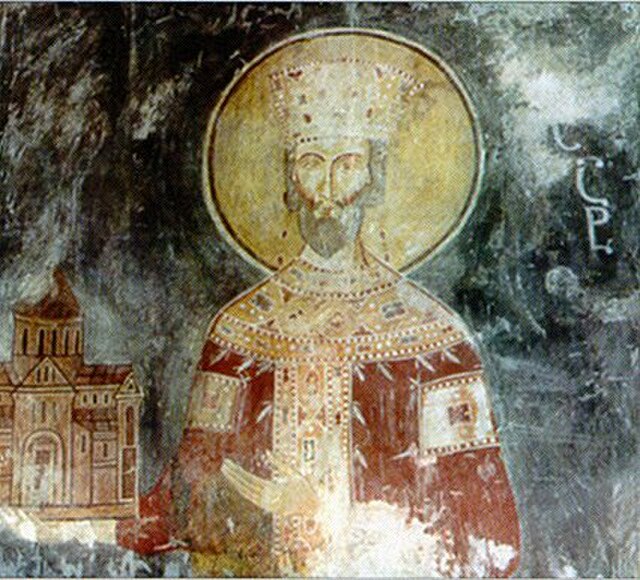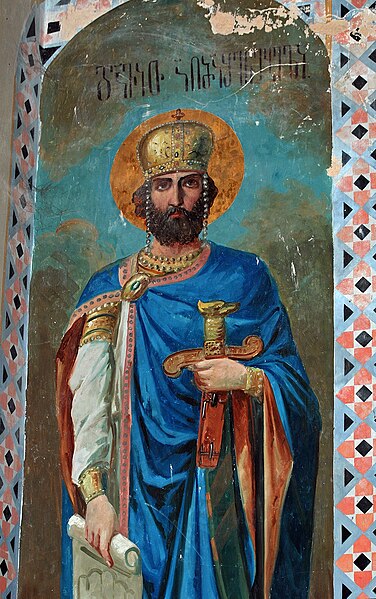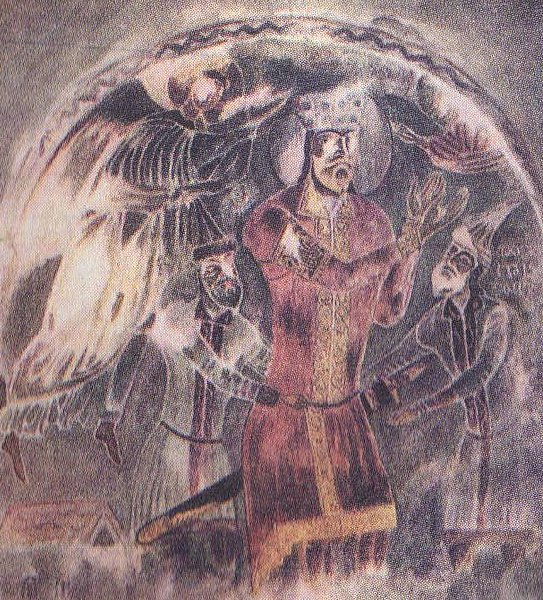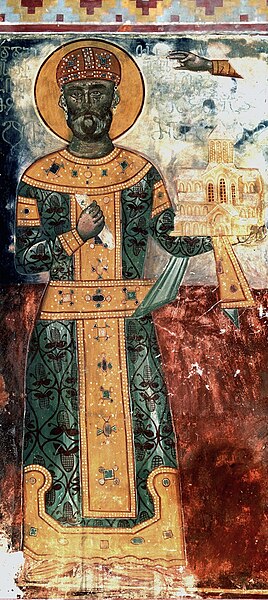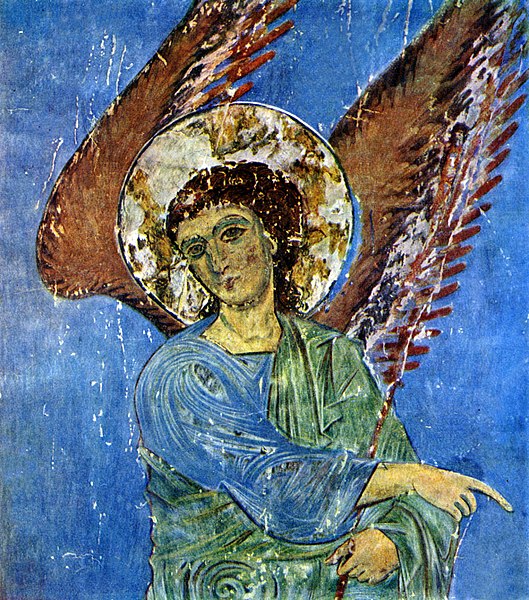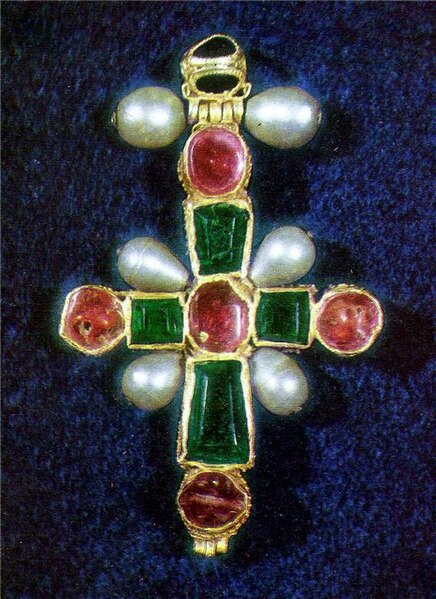The Kingdom of Georgia, also known as the Georgian Empire, was a medieval Eurasian monarchy that was founded in c. 1008 AD. It reached its Golden Age of political and economic strength during the reign of King David IV and Queen Tamar the Great from the 11th to 13th centuries. Georgia became one of the pre-eminent nations of the Christian East, and its pan-Caucasian empire and network of tributaries stretched from Eastern Europe to Anatolia and northern frontiers of Iran, while Georgia also maintained religious possessions abroad, such as the Monastery of the Cross in Jerusalem and the Monastery of Iviron in Greece. It is the principal historical precursor of present-day Georgia.
A fresco of King Bagrat III from Bedia Cathedral
David IV of Georgia, a fresco from the Shio-Mgvime monastery
Gelati Monastery, a UNESCO World Heritage Site
Coronation of Demetrius I, a fresco from Matskhvarishi, 1140
The Georgian Golden Age describes a historical period in the High Middle Ages, spanning from roughly the late 11th to 13th centuries, during which the Kingdom of Georgia reached the peak of its power and development. In addition to military expansion, this period saw the flourishing of medieval Georgian architecture, painting and poetry, which was frequently expressed in the development of ecclesiastic art, as well as the creation of the first major works of secular literature.
David the Builder, the original architect of the Golden Age. Fresco from Gelati monastery.
Gelati Theotokos. The use of costly mosaics in church decorations heralded Georgia's imperial ambitions.
Archangel of Kintsvisi, complete with scarce and expensive natural ultramarine paint, evidences increasing sophistication and resources of Georgian masters following the reign of George III
Golden cross of Queen Tamar, composed of rubies, emeralds, and large pearls

